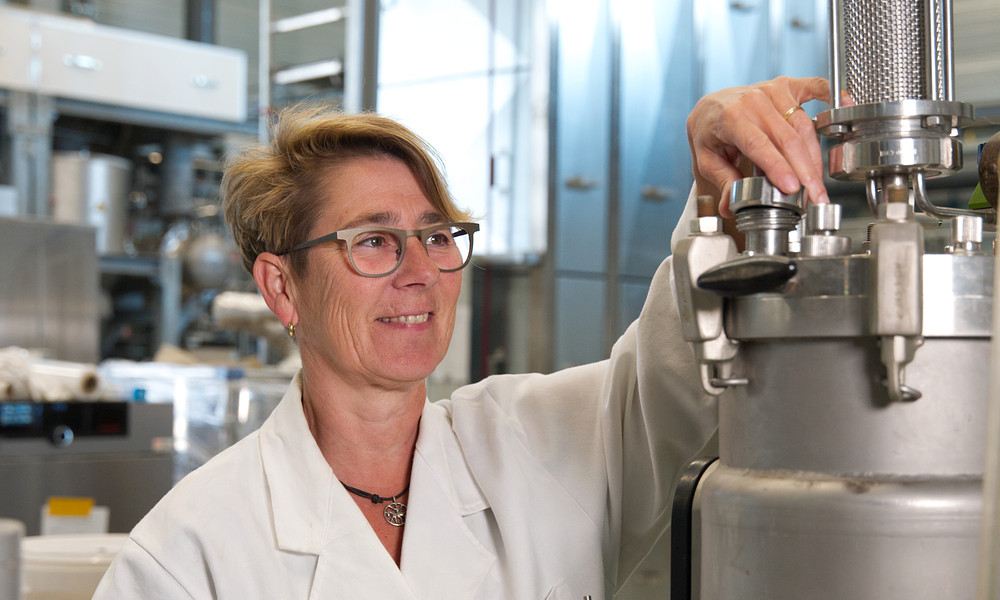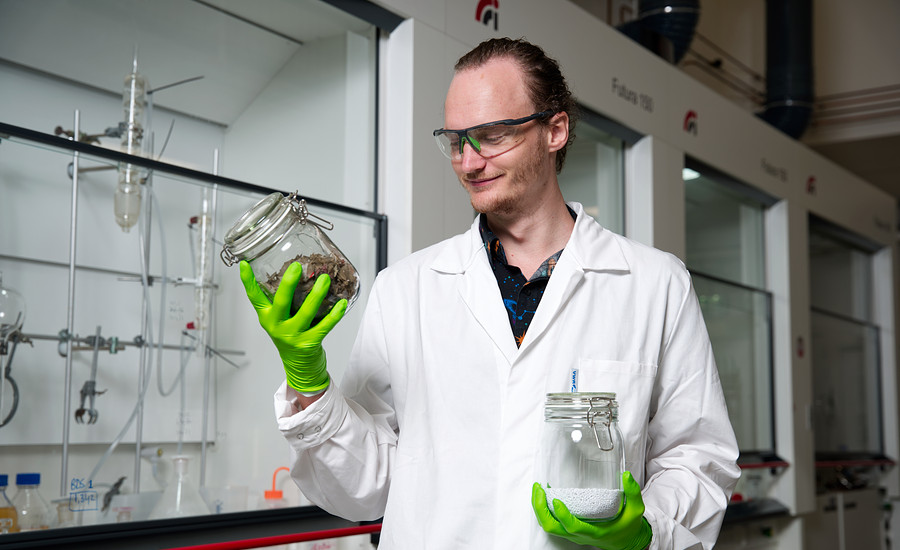Bacteria as soldiers in the fight against microplastics
- News


Janneke Krooneman is Professor of Bioconversion and Fermentation technology. In 2022 she took part in the climate expedition to Svalbard, where she was confronted with the huge amount of plastic waste on the North Pole. This hammered it home for her: we need to accelerate the transition to biodegradable plastics. With the holiday season in full swing, a time when consumers buy more plastic packaging, decoration and other single-use plastic, Janneke reminds us of the repercussions plastic waste and microplastics can have, and what the sustainable alternatives could be.
Photo Svalbard: Nathalie Steins
We all produce or use a lot of plastic together. It is important that we try to drastically reduce our plastic use. And when we do use plastic products, that we dispose of it correctly, argues Krooneman. "We can recycle plastic, but it has to end up in the right recycling bin. Besides, you can never completely prevent litter. You only have to cycle along any cycle path and you will see discarded rubbish here and there. Most plastics are made from a fossil source material such as oil. The decomposition process of this material, once it ends up in nature, is very slow. It can take decades, even centuries. Sometimes the plastic hardly breaks down at all, but disintegrates into microplastics. Microplastics spread easily in all kinds of ecosystems, such as water, air and soil, and can therefore be found all over the world. For instance, it can end up in soil where grain is grown. The plants absorb those microplastics from the soil and the grain is then used to make our bread. The microplastics are then harmful to both our health and the ecosystem."
The Hanze, in collaboration with NHL Stenden and the University of Groningen, conducts a lot of research into sustainable alternatives for plastics. “One of those alternatives is that we start using bioplastics that are biodegradable,” Krooneman begins to explain. “These sustainable plastics can be made with the help of micro-organisms from organic waste, like hay or waste water. The bioplastic is made by the bacteria as a kind of energy storage for scarce times, just like humans make fat. So they can produce it, but also break it down easily themselves. Our research shows that bioplastic breaks down quickly. It varies from a few days to a few months. It mainly depends on the structure and composition. You can inject bioplastic, for instance. Then it is pressed in a mould, and might be mixed with other substances for colour or flexibility, among other reasons. This makes the final product a bit more unstable than when you work with pure and fine material. This turns out to be a bit easier for biology to break down."
An important part of the research Krooneman and her colleagues carry out is what effect bioplastics may have on the ecosystem. “For example, we research the effect of bioplastics on soil health and plant growth. You want to know if the bioplastics are being broken down, if this affects the plants, if it inhibits their growth, or if it might actually benefit them. We use lab tests to measure this. Aside from this, we research the sustainability of products made from this bioplastic, like a coffee cup. We research how many times you can reuse this cup, and how to dispose of it properly at the end of its life cycle. For example, should you compost it, or make new bioplastics from it by using micro-organisms? These are the questions we are focusing on now.”
Some manufacturers are already using bioplastics, Krooneman says. "For example, there are already companies making coffee and festival cups from bioplastics. It is particularly interesting for festivals, because you often end up with a sea of plastic waste. We need to encourage festival-goers to reuse cups. Then we can wash them and reuse them, or if they are damaged, recycle them back into new cups. At the same time, we need to be realistic: we can never completely prevent litter. That makes using bioplastics especially appealing, because the cups are biodegradable."
Are there things that us as consumers can watch out for? Krooneman: “The main thing is to be a aware that plastic is a problem. Make sure you drastically reduce the amount of plastic you purchase, and make sure the plastic you do buy ends up in the right recycling bin. Also remember that most of the stuff you buy nowadays is still packaged in fossil plastics. You can be vigilant as a consumer by checking the plastic and only buying recycled or bioplastic products and packaging. But that’s tricky, because bioplastics aren’t widespread yet, and often it’s difficult to find the origin of the plastic. On the other hand, I think we can accelerate the transition to bioplastics if we as consumers resist plastic that is damaging to the environment.”
Krooneman took part in the climate expedition to Svalbard in the summer of 2022 as a researcher. Researchers from different institutions travelled to the south-east of Svalbard. There, Krooneman also saw first-hand how much plastic is left behind in nature. "Because of the specific sea current around Svalbard, a lot of plastic washes up on the beach at this spot. You see stuff that is very old. I'm talking, for example, about drinking bottles that are 50 years old. We found big bags full of plastic waste on the beaches of Svalbard. The expedition really raises awareness that plastic waste needs to be stopped. We especially need to focus on materials that are litter-prone or prone to breaking down into microplastics. These materials need to be replaced with bioplastics as soon as possible.
Krooneman is also researching the degradability of bioplastics on Spitsbergen. "For example, I took cups made of bioplastics to Spitsbergen. I also took soil samples back to our lab. We are particularly curious to know whether, and if so how well, these cups are degraded by microorganisms in this area and under arctic conditions. I can measure in my lab how long the degradation takes. But the conditions in Svalbard are different from those in my lab. For instance, the microorganisms living there are different from those in our temperate climate. This can cause plastic to take much longer to break down completely on Svalbard, or it might disintegrate into microplastics, or it might not break down at all. If we want to make the transition to biologically produced plastic, you do need to know what possible effects that might have on different ecosystems in different climate zones," Krooneman concludes.

The research group Bioconversion & Fermentation Technology falls under the professorship Biorefinery.
Read more about the professorshipHow satisfied are you with the information on this page?